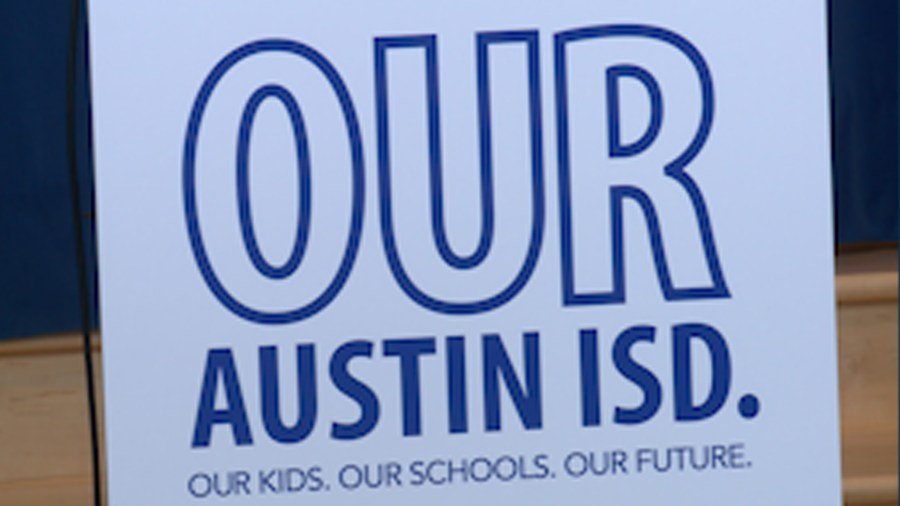AUSTIN (KXAN) — The Austin Independent School District superintendent said the district’s declining enrollment numbers are leaving too many schools under capacity and sees campus closures and consolidations as part of the solution.
While he declined to pinpoint how many campuses could close, Matias Segura said it’ll be “more than a handful,” and added the district is looking to reduce costs by $30 million.
The statement comes days after the district released new data showing the campuses with the highest number of open seats, and declared a goal of having all campuses reach at least 85% enrollment by the 2026-27 school year.
The district is currently reviewing the data and will meet with the community and stakeholders for feedback before finalizing its list of campuses to close in October.
Segura talked with KXAN about that process and other challenges the district faces as it kicks off a new school year.
This interview has been lightly edited for clarity and brevity.
Tom Miller: Austin ISD has been losing students for years, and it is looking at these closures and consolidations. Can you explain the scope of the problem?
Matias Segura: Here in Austin ISD, we have grown with the city. As the city has changed, we have had a decline in enrollment over the last 10 years. We saw some steep declines, eight, nine years ago, but it’s really flattened out. It’s around 73,000 students, but when we grew to that size several years ago, we built lots of schools. As we think about becoming more efficient, because we have limited resources, we need to make sure that those resources go to where they’re needed. We have to think about doing things differently, and that means reducing our overall footprint within Austin ISD as far as structures and number of buildings. The idea here is, let’s identify where we have misalignments in our system. Where are there boundary change issues or boundary alignment issues? Where do we have vertical team alignment issues? Where do we have transfers that are creating unintended consequences? And where do we have schools that are over-enrolled and under-enrolled? The idea over the next two months is to work with our communities, work with staff, work with stakeholders, and identify what the options can be. We’ll present a recommendation in early October.
Tom: How many schools are you looking at closing?
Segura: We haven’t defined the number of schools. A healthy system has between 85 and 90% of its seats filled in elementary and middle school and high school. We have numbers that range from 76 to 84%. It is more than a handful, I will say that, but we’re not quite ready to give an actual number. The total cost that we’re looking to reduce is around $30 million.
Tom: Does this mean teachers and staff members are going to lose their jobs?
Segura: We’re fortunate in that we can absorb a lot of changes because of the attrition we see on an annual basis. In Austin ISD, we have a very healthy attrition rate of 5%. But we’re still going to see about 600 teachers, or 400 to 500 teachers, transition every single year. We’ll be able to find homes for just about every single staff member. Even if we have two schools come together, the number of students just gets added together. So we’ll have the same number of teachers supporting those collectively. But where we see the savings is on administrative costs, right? It’s the principal, assistant principals, it’s all the support.
Tom: There are some new laws in place, including a rule of no cell phones used on campus. How’s the district going to enforce that, and what’s your personal opinion on that?
Segura: I’m in support of limiting messaging devices and cell phone devices in our schools. I feel strongly that we need to have systems in place to control cell phones. It’ll help us be more effective educators. Our policy is going to ask that our students keep their cell phones in their bags, away, out of sight, not turned on. We do want to make sure it’s accessible in the event there’s an emergency, so we’re trying to strike that balance.
Tom: Another new law has to do with the Ten Commandments, and a requirement that they’re posted in every classroom. Is that something we can expect to see on the first day of school?
Segura: Not in Austin ISD. The way the law is written, it has to be donated to us. We have over 5,000 classrooms, and we don’t have infinite resources.
Tom: As we kick off a new school year, what are you looking forward to or that you’re excited about?
Segura: Austin ISD is incredible. If you picked Austin ISD up and went anywhere else in the state, we probably wouldn’t get to do the things that we do. We’re very much aligned in our values and our philosophy around public education. We’re unique in that we’re a 50-50 school system regarding economically disadvantaged students. There’s a great tapestry of cultures in our community. We’re closer to the end of the TEA-agreed order regarding special education than the beginning. That’ll be a huge lift off this organization. It’s been a while since we’ve had this type of stability in our organization. We’re 97% staffed. We haven’t been there in quite some time. Systems are in place, and the goal right now is to continue on, do the difficult work around the budget, tackle consolidations. These things are aligned, and we are one Austin ISD. This is our school district, and we need to protect it.
